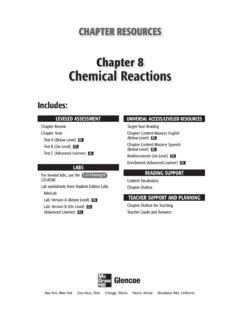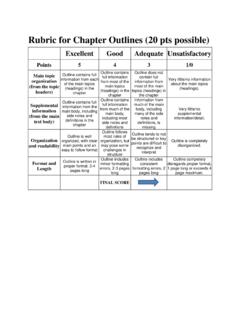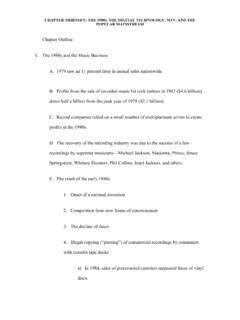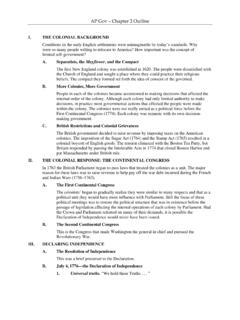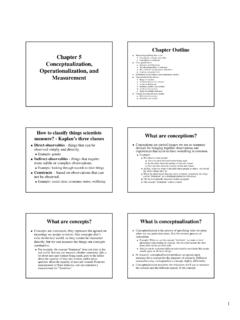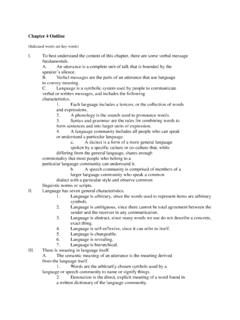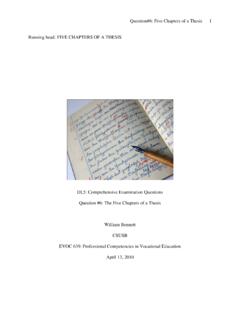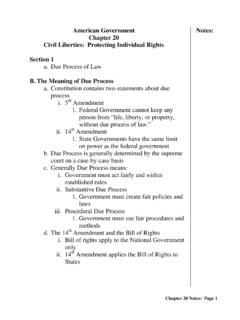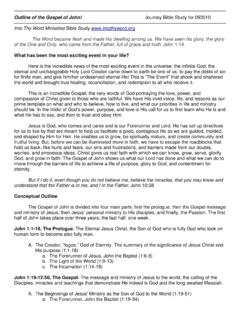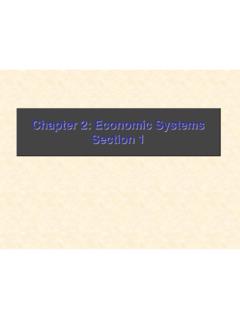Transcription of Chapter 4 Understanding the Atom - Fairfax School District
1 Chapter 4 Understanding the AtomLEVELED ASSESSMENT Chapter Review Chapter Tests Test A (Below Level) BL Test B (On Level) OL Test C (Advanced Learner) ALLABS For leveled labs, use the CD-ROM. Lab worksheets from Student Edition Labs MiniLab Lab: Version A (Below Level) BL Lab: Version B (On Level) OL (Advanced Learner) ALUNIVERSAL ACCESS/LEVELED RESOURCES Target Your Reading Chapter Content Mastery English (Below Level) BL Chapter Content Mastery Spanish (Below Level) BL Reinforcement (On Level) OL Enrichment (Advanced Learner) ALREADING SUPPORT Content Vocabulary Chapter OutlineTEACHER SUPPORT AND PLANNING Chapter outline for Teaching Teacher Guide and AnswersIncludes: Chapter RESOURCES8-04-i-vi-MSSCA07-875460 i2/10/06 12:33.
2 07 PM Glencoe SciencePhoto CreditsCover: Roger Ressmeyer/CORBIS Copyright by The McGraw-Hill Companies, Inc. All rights is granted to reproduce the material contained herein on the condition that such material be reproduced only for classroom use; be provided to students, teachers, and families without charge; and be used solely in conjunction with the Glencoe Science program. Any other reproduction, for use or sale, is prohibited without prior written permission of the all inquiries to:Glencoe/McGraw-Hill8787 Orion PlaceColumbus, OH 43240-4027 ISBN-13: 978-0-07-875460-9 ISBN-10: 0-07-875460-7 Printed in the United States of 3 4 5 6 7 8 9 10 009 11 10 09 08 07 06 Contents iiiCopyright Glencoe/McGraw-Hill, a division of The McGraw-Hill Companies, of ContentsAdditional Assessment Resources available with Glencoe Science.
3 ExamView Assessment Suite Assessment Transparencies Performance Assessment in the Science Classroom Standardized Test Practice Booklet MindJogger Videoquizzes Vocabulary PuzzleMaker at Interactive Classroom The Glencoe Science Web site at An interactive version of this textbook along with assessment resources are available online at the Teacher ..ivReproducible Student PagesHands-On ActivitiesMiniLab: How big are the particles in an atom? .. 2 MiniLab: How do electrons move?
4 3 Lab Version A: Build an Atom .. 4 Lab Version B: Build an Atom .. 7 Meeting Individual NeedsBelow, On, AdvancedTarget Your Reading .. 10 Chapter Content Mastery .. 11 Spanish Chapter Content Mastery .. 14 Reinforcement .. 17 Enrichment .. 20 Content Vocabulary .. 23 Chapter outline Worksheets .. 36 AssessmentChapter Review .. 25 Chapter Test A .. 27 Chapter Test B .. 30 Chapter Test C .. 33 Teacher Support and PlanningChapter outline for Teaching .. T2 Teacher Guide and Answers .. T68-04-i-vi-MSSCA07-875460 iii2/10/06 12:33:11 PM8-04-i-vi-MSSCA07-875460 vi2/10/06 12:33:13 PMCopyright Glencoe/McGraw-Hill, a division of The McGraw-Hill Companies, Lab/Activity Safety Form Student Name: _____ Date: _____ Lab/Activity Title: _____In order to show your teacher that you understand the safety concerns of this lab/activity, the following questions must be answered after the teacher explains the information to you.
5 You must have your teacher initial this form before you can proceed with the activity/lab. 1. How would you describe what you will be doing during this lab/activity? 2. What are the safety concerns associated with this lab/activity (as explained by your teacher)? 3. What additional safety concerns or questions do you have?Teacher Approval InitialsDate of ApprovalAdapted from Gerlovich, et al. (2004). The Total Science Safety System CD, JaKel, Inc. Used with Permission. Understanding the Atom 18-04-1-40-MSSCA07-875460 12/10/06 12:34:28 PM2 Understanding the AtomCopyright Glencoe/McGraw-Hill, a division of The McGraw-Hill Companies, _____ Date _____ Class _____MiniLabProtons and neutrons are about 1,836 times heavier than an electron.
6 How can you model the proportions?Procedure 1. Read and complete a lab safety form. 2. To represent a proton, measure 1,836 mL of water into a large container. Label the container proton. 3. To represent a neutron, label another large container neutron. Fill it with 1,836 mL of water. 4. Measure 1 mL of water into a teaspoon. This represents the electron. 5. Record what you see in the Data and Observations section and ObservationsCHAPTER 4 How big are the particles in an atom?Analysis 1. Assess whether this model is a good comparison of protons and neutrons.
7 What is good about it? What is negative about it? How would you improve it? 2. Calculate the mass of water that should be used for an atom of lithium. Lithium has 3 protons, 4 neutrons, and 3 electrons. Use the chart below to show your of Protons 1,836 mLNumber of Neutrons 1,836 mLNumber of Electrons 1 mLTotal Mass of WaterCopyright Glencoe/McGraw-Hill, a division of The McGraw-Hill Companies, _____ Date _____ Class _____ Understanding the Atom 3 MiniLab 1. Complete a lab safety form. 2.
8 Draw a straight line down the center of a 10-cm 10-cm block of foam with a ruler. 3. Break 20 toothpicks in half. Poke the halves into the foam so they are like the nucleus of an atom. 4. Use round, dried peas as electrons. Aim and f lick the peas down the center line on the block. 5. Make a diagram in the Data and Observations section below to show where the electrons came out. Use a protractor to measure the angle the electrons made compared to the center line, which is the path they would have followed if they did not hit any Analysis 1.
9 Describe how your arrangement of toothpicks was like the nuclei of atoms in a block of metal. Why did the toothpicks represent just the nuclei instead of the whole atoms? 2. Describe problems you had with this 4 How do electrons move?Data and ObservationsCopyright Glencoe/McGraw-Hill, a division of The McGraw-Hill Companies, _____ Date _____ Class _____Problem You have learned about the people who developed a picture of what atoms look like and you have learned the parts of an atom. Now, create an atom.
10 Use craft materials to design and produce your own model of an a Model 1. Read and complete a lab safety form. 2. Choose an element. 3. Draw an atomic structure diagram for that element in your Science : The atomic structure should include the number of protons, neutrons, and electrons. You can find this information in a periodic table. Remember that the atomic number tells the number of protons in the element. The number of protons and the number of electrons is always the same. Draw the protons and neutrons located in the nucleus, and the electrons located outside the nucleus.
